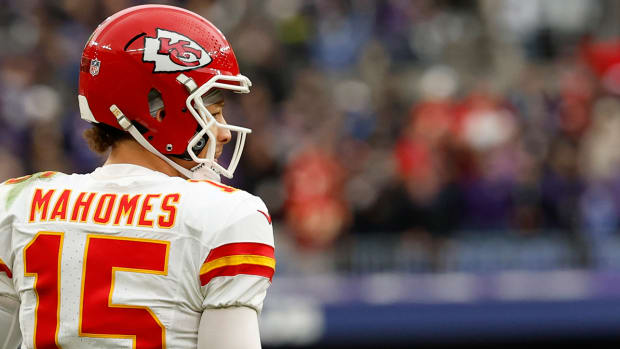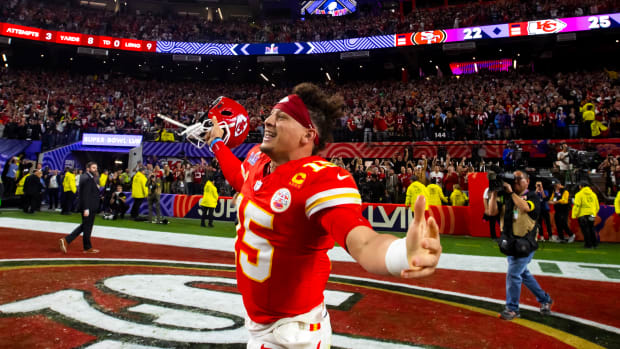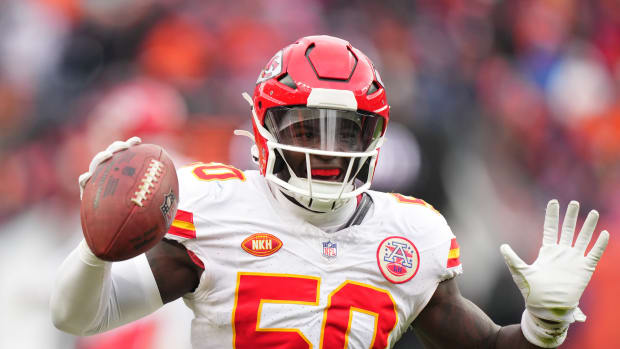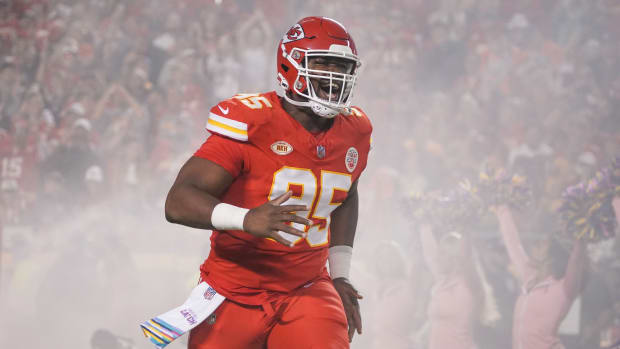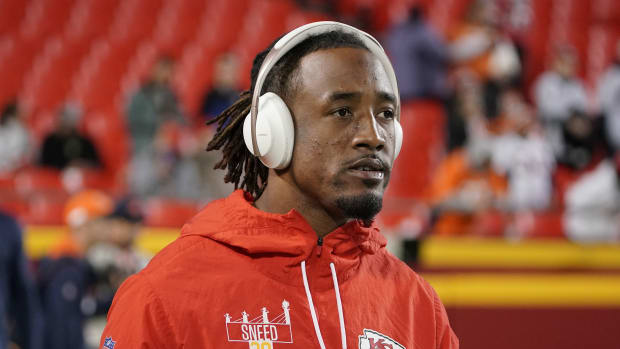The Chiefs' Best Use for Rookie RB Clyde Edwards-Helaire? Pass More!
This past year has been a special one for Clyde Edwards-Helaire. He was a major part of the most dominant offense in college football history at LSU, alongside quarterback Joe Burrow and wide receivers Ja'Marr Chase, Justin Jefferson and Terrace Marshall Jr. He celebrated his 21st birthday on April 11. On April 23, he was drafted in the first round by the defending Super Bowl champion Kansas City Chiefs, as the only running back to be drafted in the first round. He agreed to a $10.8 million contract for the next four years with the Chiefs. Times are good for the Edwards-Helaire camp, and times should continue to only get better.
Edwards-Helaire is a fantastic talent — one of the best running back talents out there. In 2019, he was the most valuable running back and the third most-valuable non-quarterback in college football in terms of the Pro Football Focus (PFF) version of Wins Above Replacement (WAR). He had the most catches, receiving yards and receiving yards after contact among draft-eligible running backs. He was highly effective on RPOs and zone runs, both of which the Chiefs used extensively in 2019. He is going to make an impact and hopefully make the Chiefs' offense even better than it was.
Now, with Damien Williams opting out of the 2020 season, it seems the Chiefs will be giving Edwards-Helaire the number one running back treatment from Week 1 and beyond. This would have been a good move even if Williams was still playing in 2020, as Edwards-Helaire is such a great fit for the team and his talent speaks for itself.
That being said, just before the NFL Draft in April I argued that the Chiefs shouldn't draft a running back at all in 2020, let alone in the first round. I still stand by that belief, as I believe a top cornerback or edge defender would benefit the Chiefs far more than a top running back, and the Chiefs didn't put a high draft pick into either of those positions. However, now that Edwards-Helaire is a member of the team and will have a key role on the team for the next few years, it is worth moving on from that point to where we can talk about how the Chiefs should use him.
The Chiefs have been the kings of the pass-first offense in recent years. They were No. 1 in early-down pass rate in the 2019 season by a wide margin by passing on more than 65% of their first- and second-down plays. They were also in the top three in the 2017 and 2018 seasons, passing on at least 55% of their first- and second-down plays in each of those seasons. This has been a crucial part to the Chiefs having the best offense in the NFL, as we know passing is far more efficient and effective than running considering zero teams in the 2018 season had a better rushing expected point added (EPA) per play than their passing EPA per play, and the Chiefs are among the top examples of that gap between passing EPA and rushing EPA. Passing the ball early and often is the best way to run an effective offense, and the teams who pass the most are typically among the league's best offenses. The Chiefs should not change this approach in the slightest and, in fact, they should continue increasing their passing rate in future years.
However, there is something interesting with the Chiefs in regards to their running back usage. The Chiefs are the league's best team at passing to their running backs and fullbacks. Shockingly enough, the Chiefs are even better on passes to their backfield than the league average for teams passing to their receivers and tight ends! While the Chiefs are still best-off passing the ball downfield to their incredible receivers, such as Tyreek Hill, Travis Kelce, Sammy Watkins and Mecole Hardman, they seem to be one of just a few teams to pass the ball to their backfield and have it make sense. This is where Edwards-Helaire's role can shine: getting him the ball in space and letting him make players miss.
Since no team, even an Andy Reid-led one, is going to throw the ball 100% of the time, the Chiefs will have to run the ball sometimes, especially in situations where you need 1-3 yards on a given play. With Edwards-Helaire's capability to make players miss, as evidenced by his 33% of carries where he avoided a tackle in 2019, he can improve the Chiefs' standing in this aspect in the coming seasons.
I do not want to see the Chiefs' rushing rate go up as a result of the addition of Edwards-Helaire. I want to see the Chiefs continue to be on the cutting edge of pushing the boundaries of what an NFL offense can do. That is what they have been doing since Andy Reid became the coach: pass-heavy, creative, fast, innovative, modern, getting players in space and letting them make a play. If Reid keeps going further in this direction, the sky is the limit. My hope is that the way Edwards-Helaire is used by Reid and Offensive Coordinator Eric Bieniemy isn't a diversion from this, but rather just an extension to it. If that happens, this offense will be more dangerous than ever. If the passing rate goes down, however, we may have already seen the peak of the Chiefs' offensive greatness.
